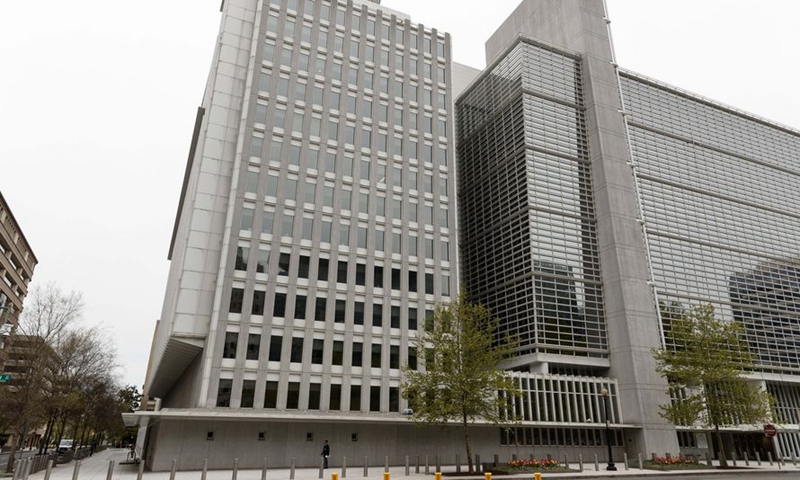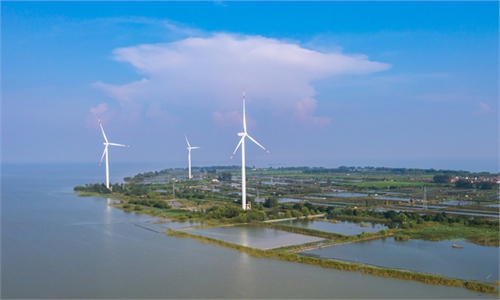Climate change to force mass migration
216 million around globe could be forced from their homes: World Bank

Photo taken on April 17, 2020 shows the World Bank headquarters in Washington, D.C., the United States. Photo: Xinhua
Reduced agricultural production, water scarcity, rising sea levels and other effects of climate change could cause up to 216 million people to leave their homes and migrate within their own countries by 2050, the World Bank has warned.
The estimate from the Washington-based development lender released Monday updates a 2018 report with new figures from Eastern Europe and Central Asia, North Africa and East Asia and the Pacific to provide a more complete overview of the potential toll from rising global temperatures.
"Climate change is an increasingly potent driver of migration," the report said. Shortages of food and water along with rising seas highlight "the urgency for action as livelihoods and human well-being are placed under increasing strain."
Juergen Voegele, the World Bank's vice president for sustainable development, said the data give a "global estimate" of the scale of potential migration.
Without decisive action, there could be "hotspots" of climate migration that "will emerge as soon as within the next decade and intensify by 2050, as people leave places that can no longer sustain them and go to areas that offer opportunity," Voegele warned.
Bank researchers in 2018 released a report on the impact of climate change on migration in South Asia, Latin America and sub-Saharan Africa, and projected 143 million people in those regions could be forced to move by 2050.
The updated estimate represents about 3 percent of the projected population of the regions covered.
"It's important to note that this projection is not cast in stone," Voegele said.
"If countries start now to reduce greenhouse gases, close development gaps, restore vital ecosystems and help people adapt, internal climate migration could be reduced by up to 80 percent, to 44 million people by 2050."
However the true toll could be far higher, as the data does not include wealthier countries such as those in Europe or North America, nor the Middle East or small island nations.
The trend could have significant implications for host countries, which are often unprepared to cope with the influx of new migrants.
"The trajectory of internal climate migration in the next half-century depends on our collective action on climate change and development in the next few years," Voegele wrote.
Breaking the data down by region, internal migrants due to climate change could hit 86 million in sub-Saharan Africa, 49 million in East Asia and the Pacific, 40 million in South Asia, 19 million in North Africa, 17 million in Latin America and 5 million in Eastern Europe and Central Asia, the bank said.
The report zeros in on water access in North Africa, which it calls "a main driver of internal climate migration."
Globally, the bank warned that "climate change impacts will hit the poorest and most vulnerable regions the hardest and threaten to reverse development gains. In some places, questions of habitability will arise."
AFP



